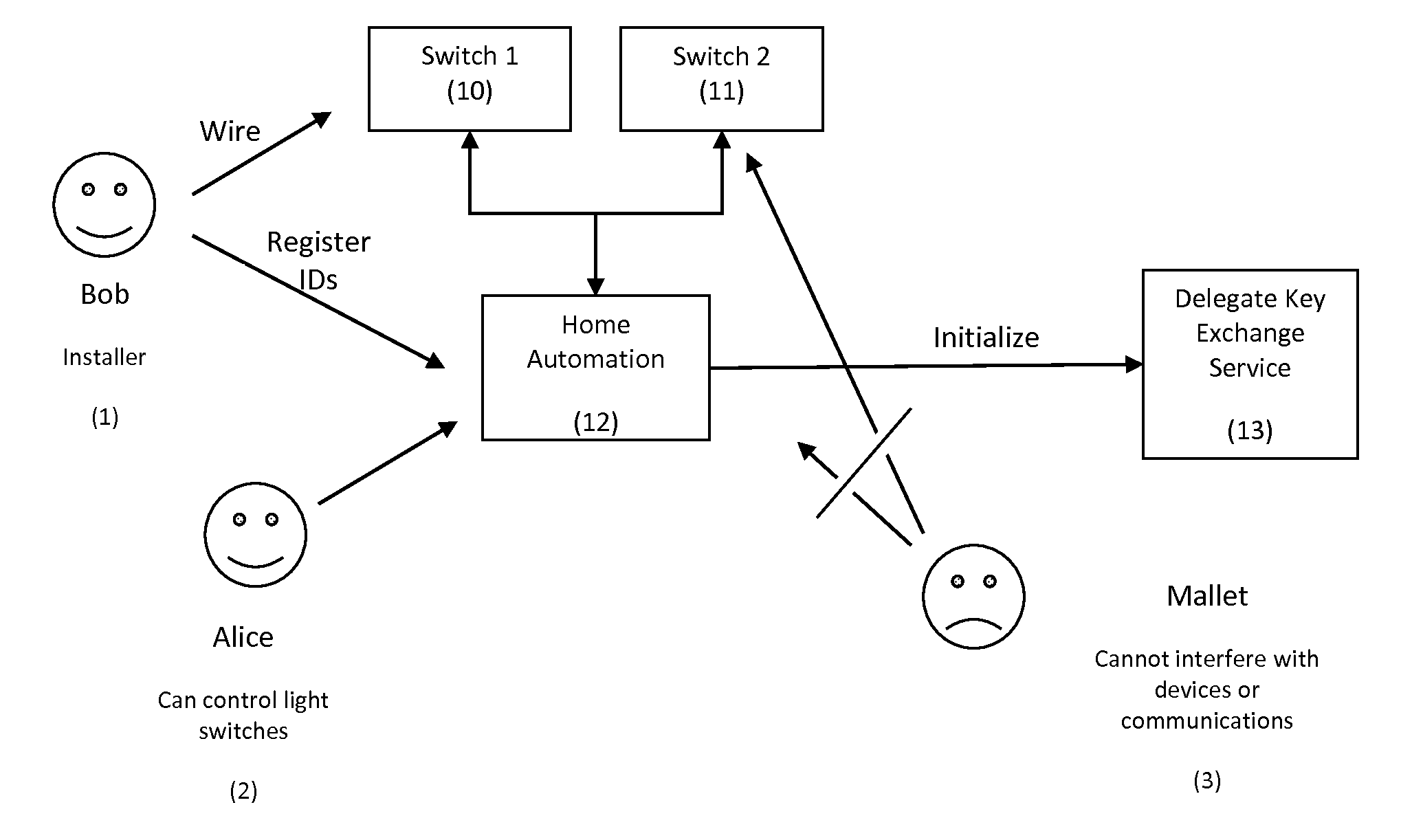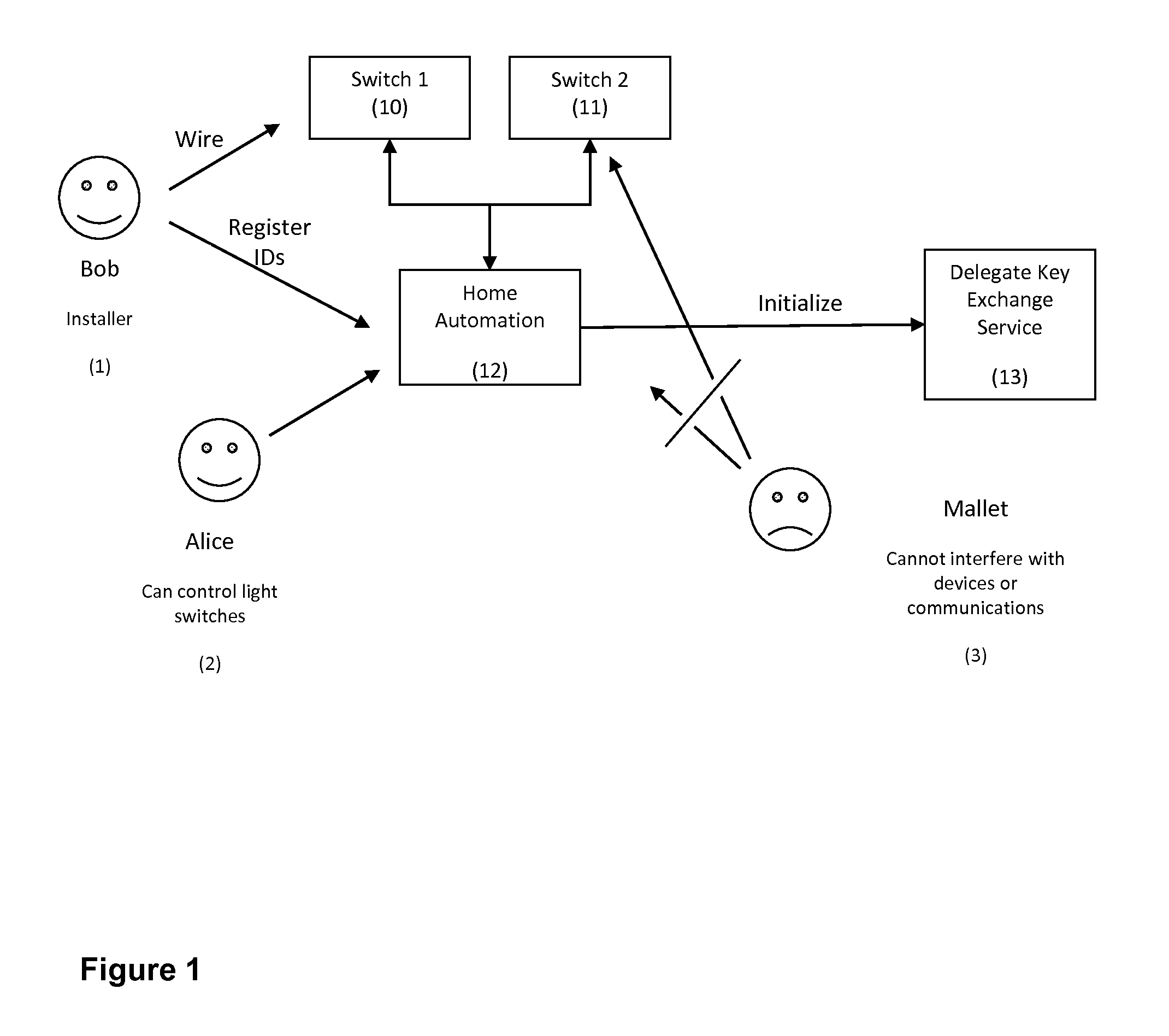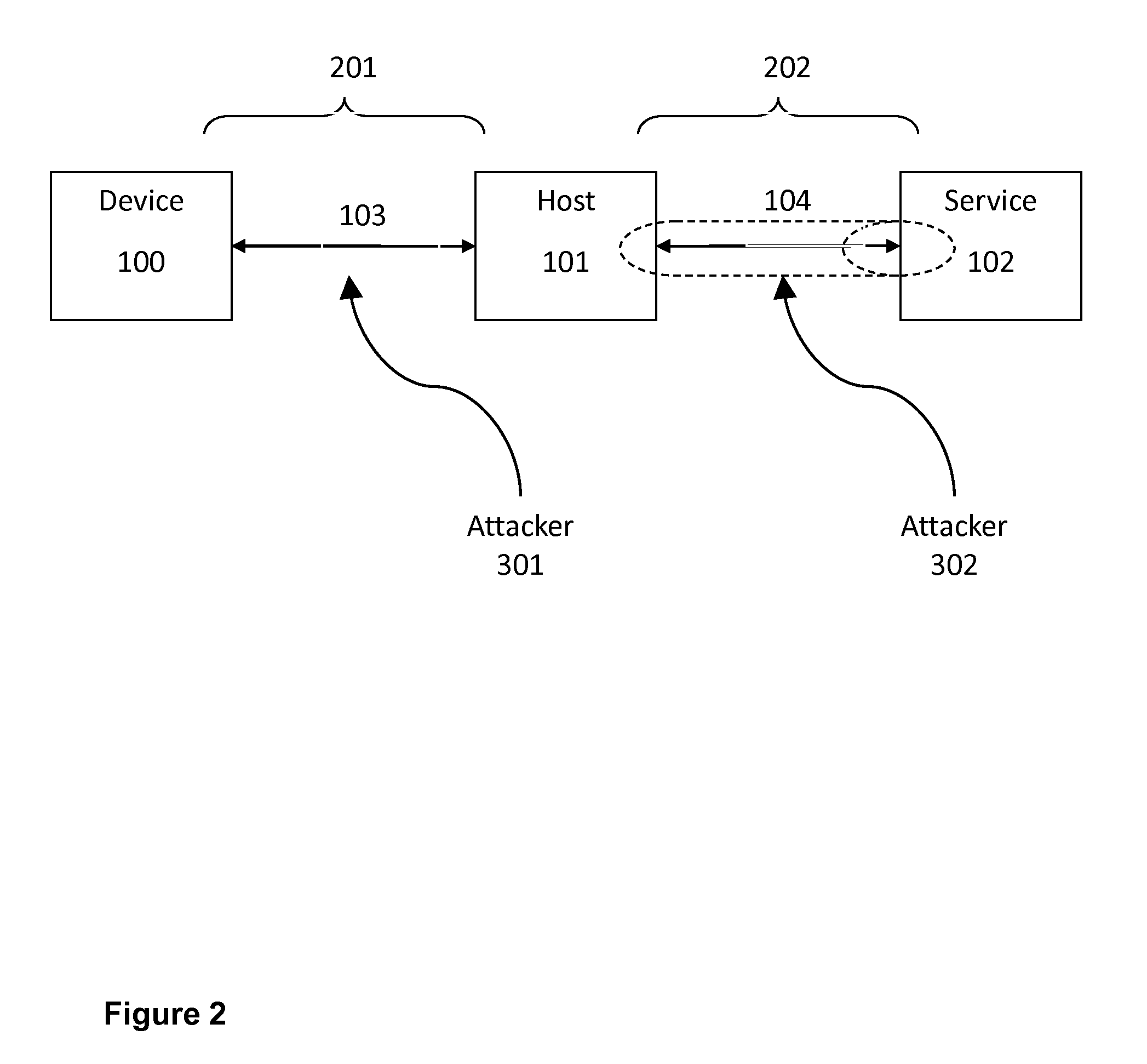Delegated Key Exchange System and Method of Operation
a key exchange and delegated technology, applied in the field of information security, can solve the problems of high undesirable ability to perform such impersonation, insufficient improvement to make implementation possible on the lowest performance device, and not true of embedded computer systems
- Summary
- Abstract
- Description
- Claims
- Application Information
AI Technical Summary
Benefits of technology
Problems solved by technology
Method used
Image
Examples
Embodiment Construction
[0027]In one embodiment, a device is initialized with a unique device identifier (ID) and device key (KD) during manufacture. The device key should conform to all the requirements for use as a cryptographic key and the mode of distribution should ensure that at the end of the manufacturing process the device key is only stored in the device to which it is issued and the delegate key exchange service.
[0028]The protocol described allows a device that has a pre-established ID, KD pair with a delegate key exchange service ‘service’ to establish a shared secret KDH with a host computer, such that:[0029]The Service cannot determine the value KDH unless it also has access to both the original request made to the Service and the communication between the Device and the Host.[0030]It is not possible to recover the value KDH from knowledge of the communication between the Device and Host alone.[0031]Any modification of the messages passing between the Device and the Host that would affect the...
PUM
 Login to View More
Login to View More Abstract
Description
Claims
Application Information
 Login to View More
Login to View More - R&D
- Intellectual Property
- Life Sciences
- Materials
- Tech Scout
- Unparalleled Data Quality
- Higher Quality Content
- 60% Fewer Hallucinations
Browse by: Latest US Patents, China's latest patents, Technical Efficacy Thesaurus, Application Domain, Technology Topic, Popular Technical Reports.
© 2025 PatSnap. All rights reserved.Legal|Privacy policy|Modern Slavery Act Transparency Statement|Sitemap|About US| Contact US: help@patsnap.com



